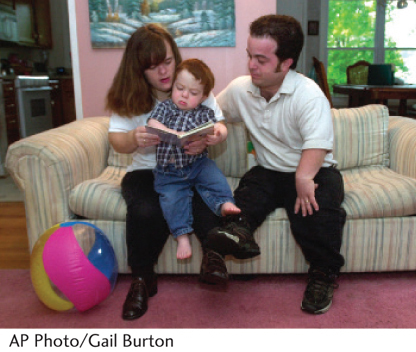CHALLENGE QUESTIONS
Question 28
28. Robert Bost and Richard Cribbs studied a strain of E. coli (araB14) that possessed a nonsense mutation in the structural gene that encodes L-
Robert Bost and Richard Cribbs studied a strain of E. coli (araB14) that possessed a nonsense mutation in the structural gene that encodes L-
On the basis of this information, are the R1 and SuB mutations intragenic suppressors or intergenic suppressors? Explain your reasoning.
Propose an explanation for how R1 and SuB restore the ability of araB14 to metabolize arabinose and why SuB is able to more fully restore this ability.
Question 29
29.Achondroplasia is an autosomal dominant disorder characterized by disproportionate short stature—
Although achondroplasia is clearly inherited as an autosomal dominant trait, more than 80% of the people who have achondroplasia are born to parents with normal stature. This high percentage indicates that most cases are caused by newly arising mutations; these cases (not inherited from an affected parent) are referred to as sporadic. Studies have demonstrated that sporadic cases of achondroplasia are almost always caused by mutations inherited from the father (paternal mutations). In addition, the occurrence of achondroplasia is higher among the children of older fathers; approximately 50% of children with achondroplasia are born to fathers older than 35 years of age. There is no association with maternal age. The mutation rate for achondroplasia (about 4 × 10−5 mutations per gamete) is high compared with those for other genetic disorders. Explain why most spontaneous mutations for achondroplasia are paternal in origin and why the occurrence of achondroplasia is higher among older fathers.

Question 30
30.Ochre and amber are two types of nonsense mutations. Before the genetic code was worked out, Sydney Brenner, Anthony O. Stretton, and Samuel Kaplan applied different types of mutagens to bacteriophages in an attempt to determine the bases present in the codons responsible for amber and ochre mutations. They knew that the ochre and amber mutations were suppressed by different types of mutations, which demonstrated that each is a different stop codon. They obtained the following results:
A single-
base substitution could convert an ochre mutation into an amber mutation. Hydroxylamine induced both ochre and amber mutations in wild-
type phages. 2-
Aminopurine caused ochre to mutate to amber. Hydroxylamine did not cause ochre to mutate to amber.
These data do not allow the complete nucleotide sequence of the amber and ochre codons to be worked out, but they do provide some information about the bases found in the nonsense mutations.
What conclusions about the bases found in the codons of amber and ochre mutations can be made from these observations?
Of the three nonsense codons (UAA, UAG, UGA), which represents the ochre mutation?
Question 31
31.To determine whether radiation associated with the atomic bombings of Hiroshima and Nagasaki produced recessive germ-